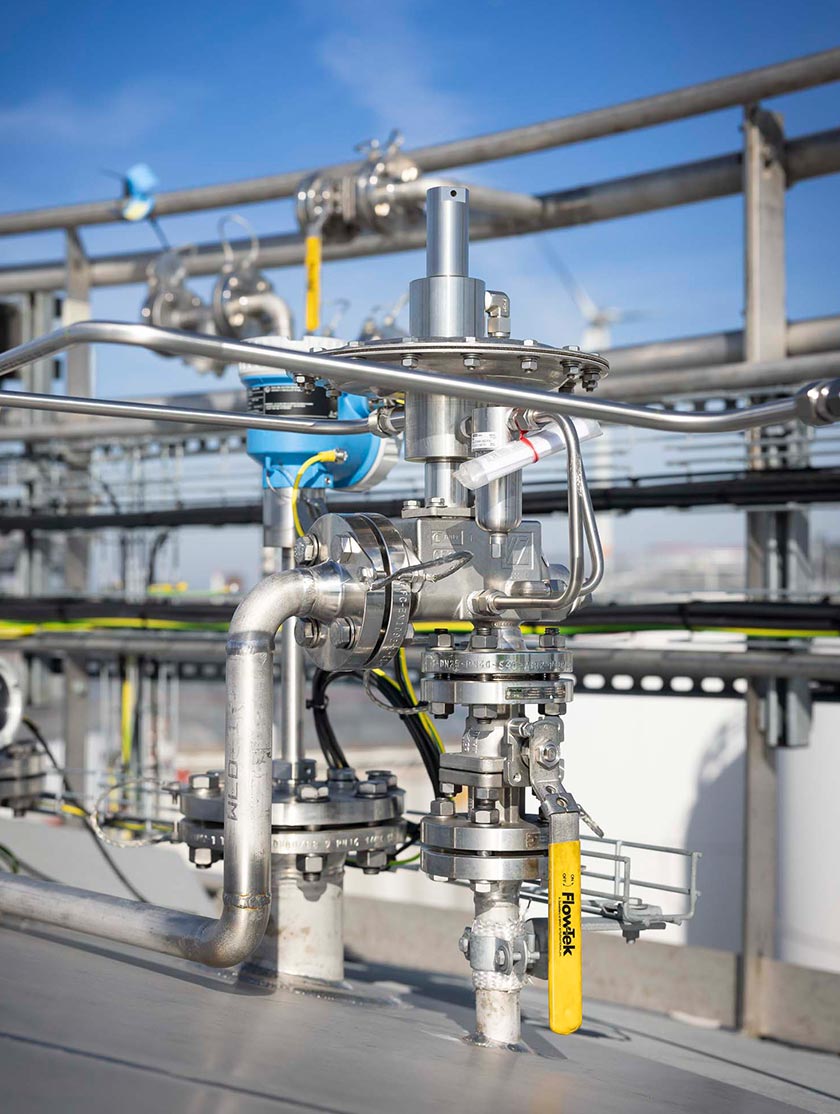Pressure Reducing Regulator Installation Requirements Guide
Correct Orientation and Positioning
Pressure reducing regulators must be installed in the correct orientation specified by the manufacturer. Typically, pressure reducing regulators are designed for horizontal or vertical pipes, with the flow direction clearly marked on the body of the device. Installing the pressure reducing regulator upside down or at an incorrect angle may result in poor pressure control, noise, or premature wear.- Flow Direction: The arrow on the pressure reducing regulator body must be aligned with the fluid flow.
- Positioning: Some pressure reducing regulators require a vertical orientation to ensure proper diaphragm operation and condensate drainage, especially in steam or gas systems.
Adequate Straight Piping
To ensure stable operation and accurate pressure control, adequate straight piping upstream and downstream of the pressure reducing regulator is essential. Turbulence caused by elbows, valves, or fittings too close to the pressure reducing regulator can cause pressure fluctuations and reduce control accuracy.- Upstream Straight Length: Typically 10 diameters of straight pipe before the pressure reducing regulator.
- Downstream Straight Length: At least 5 diameters of pipe to allow pressure to stabilize after the pressure reducing regulator.
Maintenance Isolation Valves
For complex piping systems that require frequent maintenance or adjustment, it is essential to install isolation valves on both the inlet and outlet sides of the pressure reducing regulator. This allows for pressure reducing regulator maintenance without disrupting the entire system.- Inlet Shutoff Valve: Allows upstream isolation during maintenance.
- Outlet Shutoff Valve: Allows downstream isolation and access for maintenance.
Pressure Relief and Safety Devices
Pressure reducing regulators must be installed in conjunction with pressure relief valves or safety devices to protect downstream equipment from overpressure conditions due to pressure reducing regulator failure or blockage.- Install downstream pressure relief valves in the appropriate locations based on system design and safety codes.
- Ensure relief valves are sized and set for the maximum allowable working pressure downstream of the pressure reducing regulator.
Use of Filters
To prevent debris, dirt, and particles from damaging the internal components of the pressure reducing regulator, a strainer or filter must be installed upstream of the pressure reducing regulator.- Ensure filters are washable or replaceable.
- Properly sized filters reduce the risk of clogging and pressure drop.
Pressure Tap Points
Incorporating pressure gauges or tap points upstream and downstream of the pressure reducing regulator allows for monitoring and verification of proper operation.- Install pressure gauges immediately before and after the pressure reducing regulator.
- This facilitates troubleshooting and real-time system diagnosis.
Environmental and Thermal Considerations
In complex piping systems where temperature variations are significant, take precautions to compensate for thermal expansion or contraction.- Use expansion loops or compensators near the pressure reducing regulator if necessary.
- For outdoor or unheated environments, use insulation or routing to prevent freezing or condensation.
Compliance with Codes and Standards
Ensure that the installation complies with applicable industry codes and standards, such as:- ASME B31.3 for Process Piping
- ANSI/ISA Standards for Instrumented Systems
- Manufacturer's Installation and Safety Guidelines
Conclusion
Proper installation of pressure reducing regulators in complex piping systems requires careful attention to orientation, piping layout, safety devices, and accessibility for maintenance. Adherence to these installation requirements ensures accurate pressure control, extends equipment life, and maintains system safety and efficiency. By following best practices and industry standards, engineers can optimize the performance of pressure reducing regulators in sophisticated piping systems.
Need the Right Pressure Reducing Regulator? Get Expert Help Selecting the Ideal Regulator Engineered for Performance |
Cashco’s pressure reducing regulators are designed for precise pressure control across a wide range of industrial applications—delivering reliability, safety, and efficiency. For more information about Cashco's regulators, view all models here .
Cashco is dedicated to ensuring you select the best solution for your tank protection needs. Need help choosing the right pressure reducing regulator? Contact us and our experienced team will gladly assist you in finding the ideal product!
Animated Guide: Pressure Reducing Regulator Function |
Discover the workings of a pressure reducing regulator in our animation video. Using the force-balance principle, this device reduces and maintains downstream pressure in a pipeline. Watch as we demonstrate how the regulator’s diaphragm and valve assembly create resistance to reduce upstream pressure. Learn how downstream flow demands impact the regulator, causing it to adjust and maintain a constant pressure.



